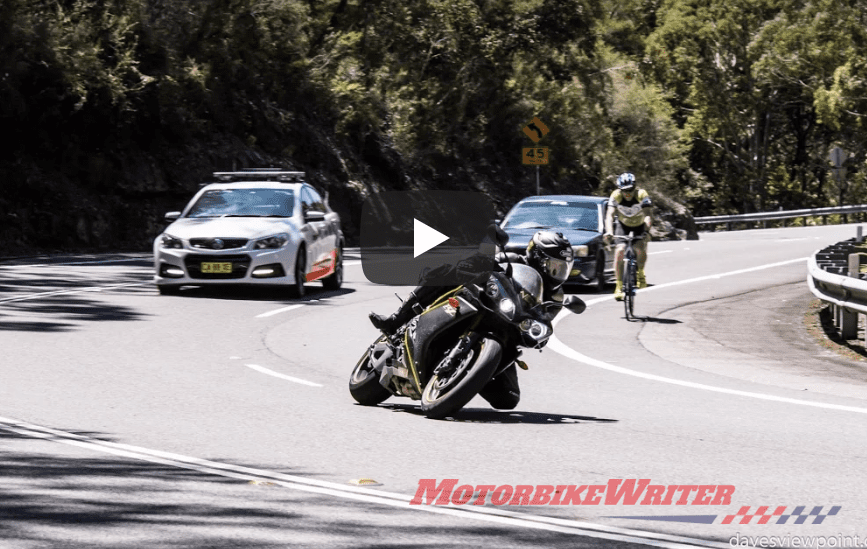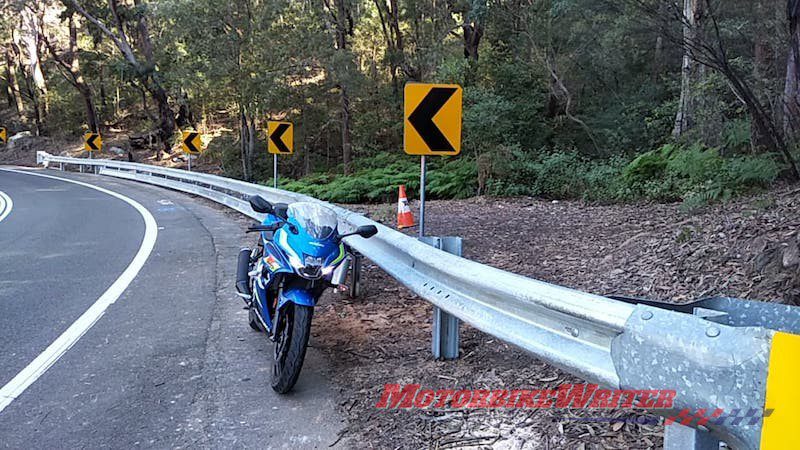Riders will no longer be able to pull over on Eddies Corner on the Old Pacific Highway – or Old Pac – to take photos after the installation of barriers with special lower rails designed to protect motorcyclists.
The long sweeping, constant radius corner is not only popular with riders, but also amateur and professional photographers and videographers.
It is also a black spot for motorcycle crashes as this Old Pac video shows.
Old Pac barriers
Roads and Maritime Services told us they were carrying out “safety improvement work” on the Pacific Highway (commonly referred to as the Old Pac) from around 300m south of the Pacific Motorway underpass to around 350m south of Glendale Road.
“Work involves installing around 890 metres of motorcycle protection measures on the existing safety barriers at four locations, including Eddie’s Corner,” an RMS spokesman told us.
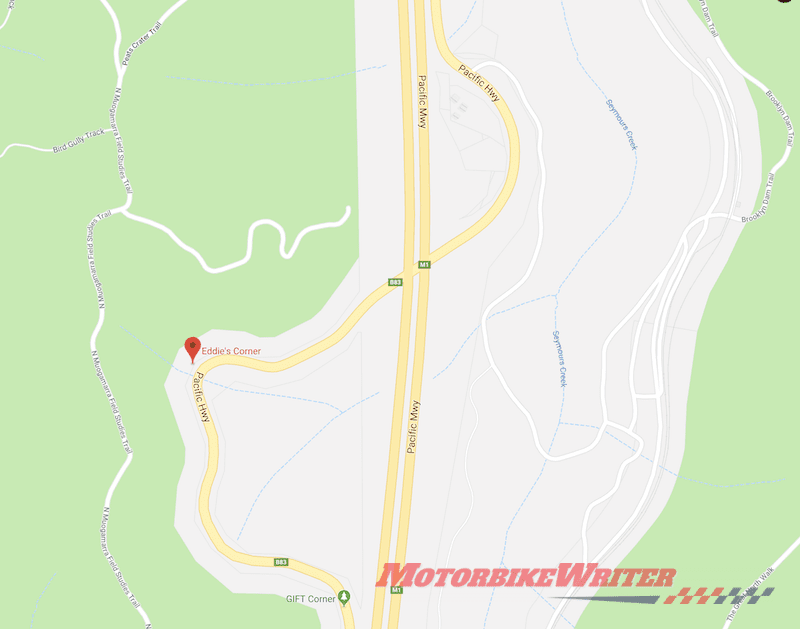
“Work is expected to be completed by the end of this month,” he says.
“For the safety of workers and motorists, barriers are in place while work is carried out. All road users are encouraged to drive to the conditions and follow the direction of all signs.”
The Old Pac barriers are steel “W beams” with a lower rail to prevent riders hitting the supporting poles which are the most lethal part of any roadside barrier.
Those who want to take photos or videos at the sight will have to park further away and walk to the spot and stand behind the new barriers.
A spokesperson for professional rider snappers Valley Images says they have had “a few interactions with the police and it is generally positive”.
“Have even had the bike cops request photos of themselves,” the spokesperson said.
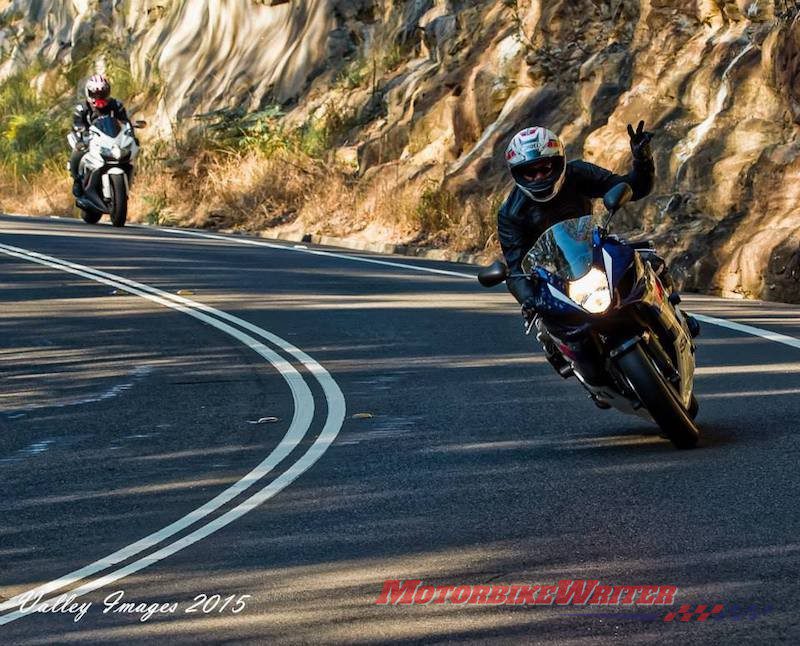
Barrier or no barrier?
For some riders, no barrier is a safety barrier.
However, a 2015 University of New South Wales research shows that trees and poles are a greater fatality risk than roadside barriers.
The study also found that the number of motorcycle fatalities involving roadside barriers “is small at around 15 per annum compared to about 230 motorcycle fatalities and around 1400 road fatalities each year in Australia”.
“Thus any alterations to roadside safety barriers will have a minor effect on motorcycle fatalities in general,” it found.
The ongoing installation of wire rope barriers on our roads continues to be a hot point of contention among riders.
Click here for more on the WRB debate or check out the stories at the end of this article for more reading.
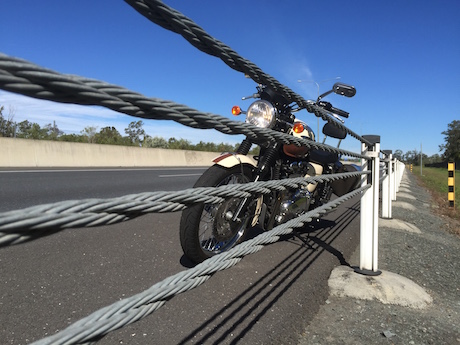
However, the NSW uni study found that rider fatalities involving impact with a roadside barrier predominantly involved steel W beams. That’s probably because they are the most common.
It found that WRBs had around half the fatality rate of W beam and concrete barriers. We cannot find any details of the national usage of various types of barriers, although WRBs seem to be the least common … for now.
Other Uni NSW findings:
- Half of the fatalities involving a roadside safety barrier usually occurred on a weekend and around 60% of all barrier impact fatalities are during recreational riding and mostly in the afternoons;
- A total of 74% of fatalities were found to involve either speed, alcohol or drugs, or a combination thereof, i.e. 3 in 4 fatalities;
- There is a strong linear association between injury severity and pre-crash speed (crash severity);
- Both sliding and upright crash postures were approximately equally represented, and mean pre-crash speeds and impact angles were found to be 100.8 km/h and 15.4° respectively. The thorax region was found to have the highest incidence of injury and the highest incidence of maximum injury in fatal motorcycle-barrier crashes, followed by the head region;
Image courtesy of Ralph Leavsey-Moase - Nearly half of the fatally injured motorcyclists received untreatable injuries, including aorta, heart, brain stem, upper cervical cord and dismemberment injuries and 81% of motorcyclists died at the crash scene;
- No statistically significant association between barrier type, crash posture and barrier post impacts, and injury severity within the limitations of the small dataset of fatal only motorcyclists, could be established; and
- In a single-vehicle motorcycle collision with a fixed object, trees and poles were found to be particularly hazardous, and more so than barriers. Fatality risk increased sharply above a „travel‟ speed of about 100 km/h, while serious injury risk was greater than 20% even at the lowest travel speeds. The tool developed from fatality risk as a function of travel speed from the Stage 3 analysis predicts that motorcyclists travelling less than about 55 km/h, could be expected to survive a collision with a fixed object.


